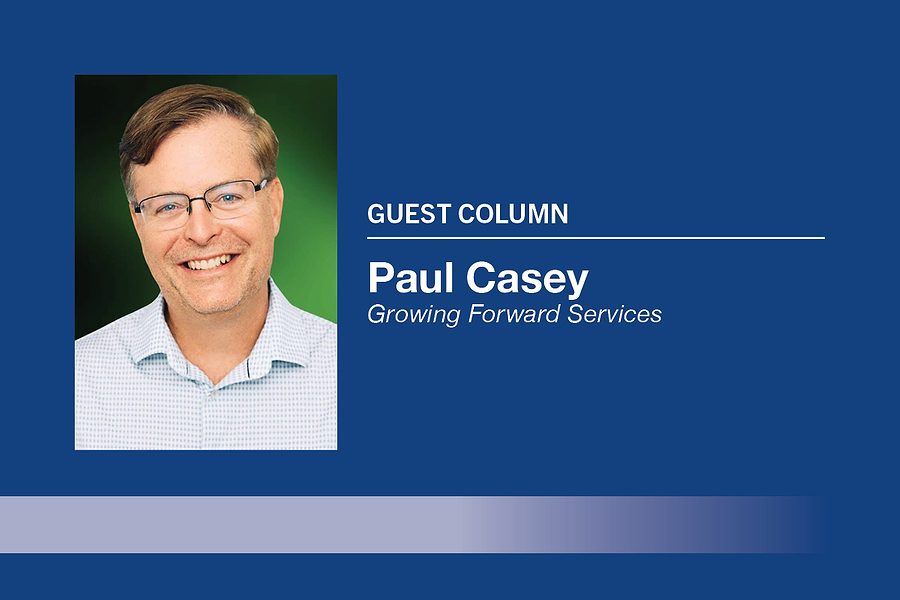
Home » Strategies to become an effective change agent in the workplace
Strategies to become an effective change agent in the workplace

December 14, 2023
A change agent is someone who promotes and encourages change in a company or organization. The external world always demands change and improvement, but improvement rarely comes without change.
As a leader, why must we be change-agents? “We cannot become what we need to be by remaining who we are,” said businessman Max Depree.
We become change-agents by first altering our own maps. We can change our attitude, work ethic, priorities and maturity. Self-leadership always precedes group leadership.
Most groups tend to fall into one of four traps, necessitating the need for change. What is yours?
• Illusion: Everything is fine. We can stay this way forever. Sunshine and rainbows!
• Panic: The sky is falling. We have do something right now!
• Exhaustion: We’re all burned out and don’t care anymore. Let’s just survive.
• Stagnation: We haven’t grown in years.
Why is it important for us to learn about leading change? One of the key traits that all peak performers share is they are people who embrace change and exercise the key skills of change management: anticipation, adaptivity and willingness to respond to new opportunities. (“Peak Performers,” by Charles Garfield).
In most situations, change is inevitable. We can either watch it occur, resist it, or help guide and direct it – but you cannot avoid it. And without this skill, you will be doomed to only reactive leadership.
Author Michael Fullan said there are five traits leaders must possess if they are to be successful in leading change.
• Moral purpose: Deep change requires looking beyond the scope of the problem and finding the actual source of the trouble. Change is necessary at the core.
• Understand change: Change management enables change within an organization by using structured approaches to shift individuals, teams and organizations from a current state to a future state. A successful leader will listen to naysayers, knowing they may have valid points. They also understand that no matter how much you plan, change is bumpy.
• Relationship-building: Now this is the glue that holds it all together. Retain a strong sense of moral vision and organizational purpose while listening to the personal and professional needs of the people around you. Leadership is relationships. The change will reveal the level of trust between leadership and direct reports.
• Knowledge creation and sharing: The process of gaining and seeking knowledge is critical, but it has little effect if you are not sharing what you’ve learned. If you’ve gained insight into an obstacle at your organization, be willing to share it and how you plan to fix it. Sharing your knowledge is key to growth. Knowledge creation and sharing fuels moral purpose.
• Coherence: The previous four traits help build coherence through checks and balances in leader interactions. This alignment will accelerate the culture change.
There are two sides to change: the hard side and the soft side. The hard side includes processes, measurements, structures and procedures. The soft side includes buy-in, commitment, attitude, creativity, overcoming resistance to change and self-leadership.
After developing the vision and strategies, consider the timing. The right decision at the wrong time can affect your success .
What percent of change initiatives undertaken by organizations fail? Between 60% to 70% – so having a strategy is huge.
• Take the time to examine the repercussions of the innovations on everyone involved. “Followers are more likely to accept change programs if the leader is perceived as actively supportive of the follower’s role in implementing the change,” said entrepreneur Robert Howsam.
• Gain buy-in from someone with a strong track record who has years of experience in the organization. They will deeply understand the culture and know the teams and influencers to be a change champion.
• Enlist the “influencers” (10%-15% of the group) as your allies. Once you convince these natural leaders on your team to accept the change, they will help “sell” it to other members.
• Communicate openly to the whole team. If you want your next step to have a lasting impact, you’ll need to take it with the consensus of your team. Being one step ahead makes you a leader, being 50 steps ahead could make you a martyr.
• Don’t ignore the dissenters, but don’t let them sidetrack change efforts. You can’t lead with purpose without causing change, and change will always cause someone to stumble. Since nothing is easier than sabotaging change, listen to dissent and respect those we wish to silence. Dissenters may hold the potential for breakthroughs to new ideas and ways of thinking. People are more likely to support their leaders’ ideas when they know they can influence them. Listen and ask: “What do you think? Why do you think that? What would you do?” You are eligible to change my view once you first demonstrate you understand my view.
Being a change agent is an art. Change will evaporate if not attended to daily. It will not be cemented until it’s a part of the new routine.
Never assume one or two explanations of innovation will be adequate. Keep the vision in front of the team, alongside very visible change champions who have been well trained to support the new venture. That’s when the improvements will come.
Paul D. Casey lives in the Tri-Cities and is the owner of Growing Forward Services, which aims to equip and coach leaders and teams to spark breakthrough success. He also is the executive director of Leadership Tri-Cities.
Latest News Opinion
KEYWORDS December 2023





